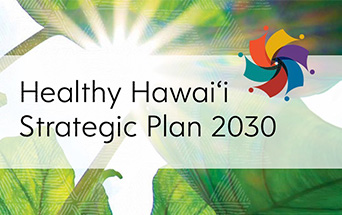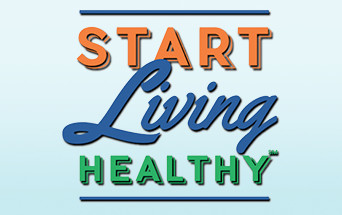test multi
 |
 |
 The Hawai‘i Behavior Risk Factor Surveillance System (HBRFSS) administers an annual telephone health survey of Hawai‘i residents 18 years and older which includes questions about tobacco cessation, prevalence and second hand smoke. Recent improvements to the HBRFSS survey are the use of dual sampling frame (landline and cell phone) and iterative proportional weighting methodology (ranking) as of calendar year 2012. Latest results are for 2014.
[/learn_more] [learn_more caption=”Hawai‘i Youth Tobacco Survey”]
The Hawai‘i Behavior Risk Factor Surveillance System (HBRFSS) administers an annual telephone health survey of Hawai‘i residents 18 years and older which includes questions about tobacco cessation, prevalence and second hand smoke. Recent improvements to the HBRFSS survey are the use of dual sampling frame (landline and cell phone) and iterative proportional weighting methodology (ranking) as of calendar year 2012. Latest results are for 2014.
[/learn_more] [learn_more caption=”Hawai‘i Youth Tobacco Survey”]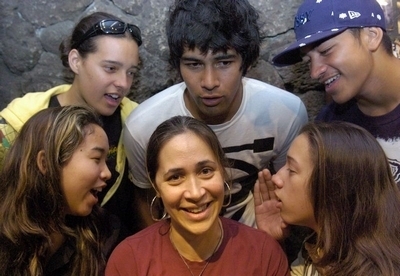 The Hawai‘i Youth Tobacco Survey (HYTS) is a bi-annual survey of public school students grades 6 – 12 that collects information about tobacco use and access, exposure to tobacco messages and secondhand smoke, and knowledge, beliefs and attitudes regarding tobacco.
[/learn_more] [learn_more caption=”Adult Tobacco Survey”]
The National Adult Tobacco Survey (NATS) was created to assess the prevalence of tobacco use, as well as the factors promoting and impeding tobacco use among adults. NATS also establishes a comprehensive framework for evaluating both the national and state-specific tobacco control programs.
The Hawai‘i Youth Tobacco Survey (HYTS) is a bi-annual survey of public school students grades 6 – 12 that collects information about tobacco use and access, exposure to tobacco messages and secondhand smoke, and knowledge, beliefs and attitudes regarding tobacco.
[/learn_more] [learn_more caption=”Adult Tobacco Survey”]
The National Adult Tobacco Survey (NATS) was created to assess the prevalence of tobacco use, as well as the factors promoting and impeding tobacco use among adults. NATS also establishes a comprehensive framework for evaluating both the national and state-specific tobacco control programs.
NATS was designed as a stratified, national, landline, and cell phone survey of non-institutionalized adults aged 18 years and older residing in the 50 states or D.C. It was developed to yield data representative and comparable at both national and state levels. The sample design also aims to provide national estimates for subgroups defined by gender, age, and race/ethnicity.
- 2006 Hawai’i Adult Tobacco Survey The 2006 Hawai’i Adult Tobacco Survey (ATS) collected in-depth data on the knowledge and attitudes of Hawai’i adults regarding the use of tobacco products, cessation efforts among smokers, attitudes and exposure towards second-hand smoke (SHS), and overall attitudes regarding smoking and its effects upon smokers and non-smokers.
- National ATS, 2003-2007
- National ATS, 2009-2010
[/learn_more] [learn_more caption=”Women and Smoking “] 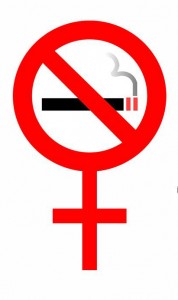
- American Cancer Society; Women and Smoking
- The Pregnancy Risk Assessment and Monitoring System (PRAMS) is an annual representative survey of women who give birth in Hawai‘i. PRAMS collects state-specific, population-based data on maternal attitudes and experiences prior to, during, and immediately following pregnancy. Tobacco use is one of the areas covered by PRAMS:
- Smokefreewomen Web site created by the Tobacco Control Research Branch, Behavioral Research Program, Division of Cancer Control and Population Sciences of the National Cancer Institute
- Women and Smoking: A Report of the Surgeon General. March 2001
- Hawaii Perinatal Smoking Quick Facts
 Smoking-Attributable Mortality, Morbidity, and Economic Costs (SAMMEC) This online application allows you to estimate the health and health-related economic consequences of smoking to adults and infants. You will have to register to access the Computations and Reports sections of Adult and MCH SAMMEC. Once registered, you will have access to both Adult and MCH SAMMEC databases.
[/learn_more] [learn_more caption=”Smoke Free Housing”] 39-minute video of Serena Chen’s talk in Honolulu on second hand smoke in apartments:
Smoking-Attributable Mortality, Morbidity, and Economic Costs (SAMMEC) This online application allows you to estimate the health and health-related economic consequences of smoking to adults and infants. You will have to register to access the Computations and Reports sections of Adult and MCH SAMMEC. Once registered, you will have access to both Adult and MCH SAMMEC databases.
[/learn_more] [learn_more caption=”Smoke Free Housing”] 39-minute video of Serena Chen’s talk in Honolulu on second hand smoke in apartments:
- CAI newsletter on smoke free housing
- Adopting a Smoke-Free Policy: A Guide for Hawai‘i Multi-Unit Housing Owners, Associations and Managers
Other Hawai‘i resources:
- The Burden of Chronic Obstructive Disease (COPD) in Hawai‘i – 2010
- Hawai‘i State Asthma Plan for 2011 – 2016
- Hawai‘i State Cancer Plan for 2010 – 2015
- Smoking & Tobacco Use In Hawai‘i Fact, Figures & Trends. July 2010
- Hawai‘i Tobacco Control Plan for 2011-2016
- 2013 national report card for Hawai‘i
National resources:
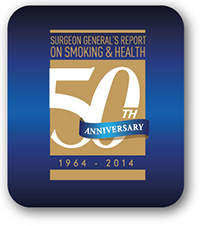 2013 Surgeon General Report on youth and young adult tobacco use
2013 Surgeon General Report on youth and young adult tobacco use- 2013 Prevention Status Report for Hawaii
- Center for Tobacco Control Research & Education
- Involuntary Smoke Bibliography, this database includes abstracts of approximately 900 key articles regarding involuntary smoking and disease outcomes referenced in the 2006 Surgeon General’s Report: The Health Consequences of Involuntary Exposure to Tobacco Smoke.
- Medpage Today
- PubMed, is a free database accessing primarily the MEDLINE database of references and abstracts on life sciences and biomedical topics,
- Tobacco.org, daily compilation of tobacco control news in the U.S. and around the world
 No e-cigarette smoking poster and 2-to-a-page format
No e-cigarette smoking poster and 2-to-a-page format- Quit-line referral poster for health professionals counseling pregnant women,
- No direct sales to minors poster for retail staff.
Hawai‘i Fact Sheet(s)
Video(s):
34-minute video of Stan Glantz PhD’s talk in Honolulu on electronic smoking devices:
44-minute video of Karen Wilson MD’s talk in Honolulu on second-hand smoke risks to youth, click here for reference citations:
[/learn_more] |
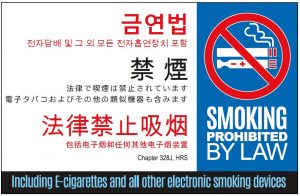 |
| Multilingual Age 21 sign | Multilingual NO SMOKING sign |
Tobacco Prevention & Education Program – 1250 Punchbowl St. Rm 217- Honolulu, HI 96813
Phone: (808) 586-4613 / Fax: (808) 586-8252


